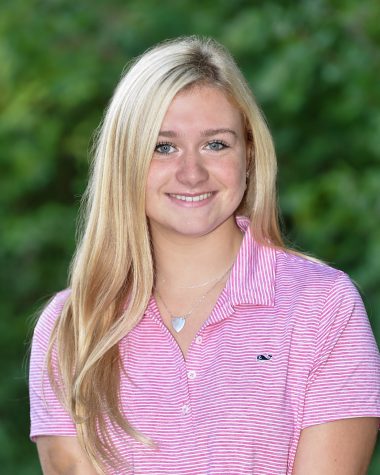A Look Back at the CELL-ebration

February 20, 2020
Everyone looks forward to a celebration, and the popular ninth-grade biology “CELL-ebration” is no exception. The highly-anticipated project for the Class of 2023 took place in December. The brainchild of Dr. Higgins, the CELL-ebration returned to the Hilltop for the seventh consecutive year and once again proved to be a unique learning experience for the freshman class.
Dr. Higgins created the CELL-ebration while teaching at his former school. Sitting in front of a microscope and reading textbooks about organelles isn’t ideal for a student and definitely not the most efficient way to absorb this knowledge. After reflecting on his own education, he recognized that he had a desire to make science fun. While watching ‘The Magic School Bus,’ the idea of the CELL-ebration began to spark. The concept of being able to learn by shrinking down a cell and walking into a classroom was clearly unrealistic, but “blow[ing] a cell up and work[ing] within it” became the pragmatic alternative and the inspiration for CELL-ebration as we know it today. Ms. Fancher, who graduated from St. Luke’s in 2014, added, “To me it is something that I wish I had the chance to do.”
Each student was assigned to a supergroup of eight to ten students across multiple class sections, and each supergroup was given a particular organelle to research. The CELL-ebration invites students to be creative with the way that they are learning. Not only do they have to understand how their designated organelle functions, but they also need to be able to find the best materials to make the organelle come to life.
Doc said, “The way that the organelles are envisioned and then brought to fruition is a direct result of what you [the students] see in the supergroup.”
The CELL-ebration promotes teamwork amongst your in-class group as well as with the members of the other supergroups. In order for protein synthesis to be properly represented, all six supergroups must work together to have a smooth transition between each organelle.
Ms. Fancher mentioned, “Getting different opinions and ideas from different people can be eye-opening.”
Dr. Higgins stated that each CELL-ebration “takes on the character of that particular grade.” He mentioned that “the rough endoplasmic reticulum took on a new form this year with the use of nets instead of just sheets…we could really see how the RNA was received and how a vesicle formed.” Also, “the ribosome and protein group had a different vision than what that group had been in the past. There was more evidence of their intellect and work on display….What was most stunning was the clear parts of the Golgi [Apparatus] because you could see the students work in it.”
Biology students felt that the CELL-ebration solidified the concept of protein synthesis for them in a way that reading a book or looking at a cell through a microscope could not.
Macy Millones ‘23 noted, “The creative atmosphere of the class and the design process of the organelles lead to our ability to deepen our understanding of protein synthesis.”
Possibly the best takeaway is, as Doc pointed out, “the enduring memories that students who do the CELL-ebration will have.” Doc still “gets email[s] to this day of graduates from college that they were explaining the CELL-ebration to someone. There is something about that tangibility factor.”
No doubt the Class of 2023 will have fond memories of this project for years to come.




Dr. Higgins • Feb 21, 2020 at 5:50 pm
Kiley, you did a phenomenal job capturing the essence and purpose that brought the CELL-ebration to life. Thank you for this wonderful article!
Abby Thomas • Feb 21, 2020 at 9:25 am
Great article Kiley!